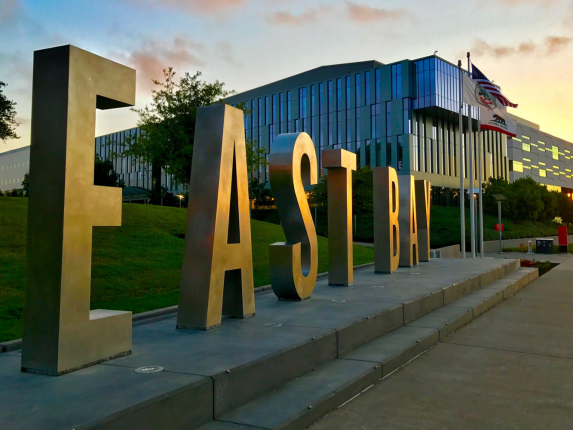The Role of AI in the Future of Predictive Policing

Eleanor Hecks is a senior HR and business writer at Designerly Magazine. After growing up with parents who both worked in the public sector, Eleanor is passionate about specifically applying her insights to those in the government and education professions. You can connect with her on LinkedIn or follow Designerly on X for business and design insights.
As public safety agencies deal with rising demands and limited resources, many are turning to smart solutions that enhance decision-making. Predictive policing has become a part of this strategy as law enforcement gears their agencies with the latest tech innovations.
One component amplifying these efforts is artificial intelligence (AI). With the amount of information it can process in little time, AI is reinventing how agencies approach prevention, response and community engagement.
What Is Predictive Policing?
Predictive policing is a technological strategy of law enforcement that uses historical data, algorithms and statistical models to forecast where crimes are most likely to take place and who could be involved. The purpose of this method is to support current policing methods, giving officers an upper hand in preventing incidents more proactively.
One area where predictive policing was successful was on the night of New Year’s Eve in Richmond, Virginia. During this time of year, the city experiences a spike in random gunfire. To address this issue, police analyzed past data to look for patterns in the incidents’ time, location and nature.
Armed with this insight, they strategically placed officers in high-risk areas on New Year’s Eve to deter potential offenders and respond quickly. As a result, they achieved a 47% decrease in gunfire and a 246% increase in seized weaponry. At the same time, it saved the department nearly $15,000 in personnel expenses.
Predictive policing programs can be an efficient way to reduce crime and enhance law enforcement efforts. However, some argue with the drawbacks, which have led some police departments to phase out or reduce their use.
Additionally, a skills gap in AI technologies has led to setbacks in adoption. Research shows that only 12% of people know how these smart tools work. However, a training gap is only one part of the issue keeping government agencies from making the most of predictive policing.
How AI Is Powering Predictive Policing
Artificial intelligence is becoming increasingly central to predictive policing as agencies look for more efficient ways to prevent crime and allocate resources. Over the past decade, advancements in machine learning, data integration and automation have made analyzing massive amounts of structured and unstructured data possible.
As cities modernize their public safety systems, many are adopting AI tools further to innovate predictive policing efforts through the following solutions:
- Machine learning and big data analytics: These sift through historical crime and tension data to reveal patterns and correlations between criminal occurrences.
- Computer vision and facial recognition: Smart cameras and sensors detect unusual behaviors and alert officers in real time.
- Gunshot detection systems and real-time mapping: Cities now deploy acoustic sensors that automatically detect and triangulate gunshots.
- Drones and aerial surveillance: Law enforcement agencies increasingly use drones for rapid, cost-efficient overviews in large-scale events and crisis zones.
- Crowdsourced reporting and behavioral analytics: AI systems now integrate citizen reports with official data to build unified incident profiles.


Since the addition of AI, law enforcement agencies have gained more effective and efficient approaches to crime prevention.
ELEANOR HECKS
Benefits of AI in Predictive Policing
Since the addition of AI, law enforcement agencies have gained more effective and efficient approaches to crime prevention. For instance, this technology improves resource allocation. It helps agencies learn where crimes may occur, allowing departments to respond more quickly. This ability has enabled increased public safety. Simultaneously, it builds community trust because patrols are more strategic and can offer more support.
AI also makes investigations more precise. With data patterns identifying areas to cover, law enforcement can find suspects or repeat offenders more quickly. Additionally, real-time surveillance and automated alerts can support officer safety and coordination during high-risk events.
Risks, Challenges and Ethical Concerns
Despite its promise, the use of AI in predictive policing presents some challenges. One key concern is the risk of bias in data and algorithms. AI can reinforce those patterns if the historical data used to train these systems incorporates past overpolicing or systemic inequalities. This raises questions about fairness and the potential for disproportionate targeting in certain communities.
Another major hurdle is public trust. Recent findings suggest that 70% of Americans report trust issues with companies that employ AI. This skepticism comes from concerns regarding transparency and civil liberties.
Privacy is another pressing matter. With facial recognition and automated surveillance, government agencies encroach on individual rights, especially in areas with strict data privacy laws. While some regions are more accepting of it, other countries question the use of this technology in the face of privacy regulations.
Considerations for Public Sector Professionals
As AI becomes more integrated into law enforcement and public safety, professionals across the public sector will have a role to play in ensuring ethical and effective use. This leads to several considerations, including:
- Understand the technology’s capabilities and limitations: Gain knowledge of how AI in predictive policing works, including what it can and can’t do. This helps professionals advocate for responsible implementation and avoid overreliance on automated systems.
- Push for transparency and accountability: Support efforts to make AI-driven decisions explainable and reviewable. Whether you work in administration, policy or IT, promoting documentation and oversight processes is essential.
- Advocate for community engagement: AI tools shouldn’t work in isolation. Encourage dialogue between agencies and their communities to ensure you’re addressing privacy, bias and fairness.
- Invest in training and upskilling: With AI use growing, understanding how to work with these tools will be increasingly important. Consider pursuing training in data ethics, AI literacy or criminal justice technology.
Guiding the Future of Predictive Policing With Integrity
AI is increasingly influential in how law enforcement forecasts and responds to crime. These tools offer the potential to make public safety efforts more strategic and responsive, but with that potential comes a responsibility to ensure transparency and fairness. As the technology grows, more policies and people must guide its use. When using AI safely and ethically, predictive policing will build smarter, safer and more equitable communities.
Want new articles before they get published? Subscribe to our Awesome Newsletter.

CAREER ADVICE

GOV TALK




